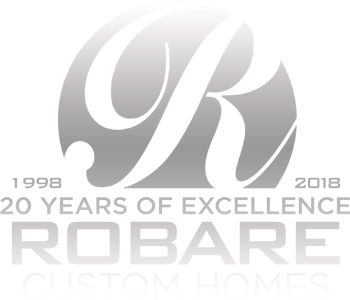11 Oct Fire Safety Begins With the Build
At Robare Custom Homes, fire safety is a major consideration in the design, materials, and quality of labor we choose to build your custom home. In recognition of National Fire Prevention Week, we want to remind you of the importance of choosing a custom builder, like Robare Custom Homes, who takes no short cuts when it comes to your safety. We understand that although fire safety ends with you becoming aware of ways to keep yourself safe at home, it begins with us and the materials that are used to build. While no home can be entirely fireproof, there are a number of materials that you can choose in the building of your new custom home that will significantly reduce the chances of fire hazard. If you build using the right materials, your home will have a far better chance of withstanding fires. Especially if you live in an area that is vulnerable to wildfires, or you simply want that extra protection for your property—and your family— check these high-tech and innovative products that will help you build a safer home.
Fire-Resistant Decking and Framing
Fires often start with Decks, usually from embers flying from your outdoor grill. Although most wood species are rated Class C for fire resistance, you can choose to build safer with a Class A–rated composite decking made from wood fiber and PVC. Wood impregnated with flame-retardant chemicals, is a more economical choice for a fire-resistant deck. Many treated deck heart-grade redwood and cedar have even lower flame-spread values.
Fire-Resistant Doors and Windows
Ordering custom-made windows with heat-reflective glass reduces the amount of heat that can enter your home when a fire is outside. The single-pane window’s heat-reflective coating acts to reduce up to 90 percent of a fire’s heat. Windows clad in steel is the most fire-resistant framing material.
If you aren’t prepared for the extra cost of fire-rated custom windows, installing regular dual-pane windows throughout the house is another option. Although they are not specifically designed to protect against the heat of a fire, dual panes do provide more protection than single-pane glass.
Metal entry doors are recommended for better protection against fires than wood or fiberglass, because they buy more time should you have to escape from the fire.
Fire-Resistant Roofing and Siding
Metal roofing won’t ignite, and in combination with a fire-resistant barrier material underneath, it provides Class A protection. Metal roofing also requires little maintenance. Clay tile is both durable and noncombustible. However, if you use the barrel-shaped variety, make sure openings are sealed so flying embers wouldn’t penetrate your roof.
Fire-Resistant Insulation
Most insulation is fire-rated, but mineral wool is among the best. Also known as rock wool or slag wool, this material is one of the oldest types of insulation composed of noncombustible fibers. Unlike fiberglass insulation, mineral wool does not melt when exposed to such high heat.
Eco-friendly cellulose insulation is manufactured from recycled paper and treated with non-toxic fire-retardant additives, such as boric acid. The material is blown into place and fills tightly around electrical boxes and other obstacles that will prevent fire from spreading.
Light Switches and Light Boxes
Cover guards for light switches and electrical outlets are easy to install by sticking the adhesive-backed guards to the back of your electrical boxes and behind your decorative wall plates. Made of condensed foam that expands when exposed to heat, the guards are designed to extinguish sparks if ever there is a wiring mishap.
A special housing for recessed lights protects against insulation fires caused by the build-up of heat around can lights. The housing is set away from the light source, preventing the insulation from coming into direct contact with the bulb. Keeping your lights clear of insulation is one way to ensure that sparks and prolonged exposure to high temperatures will not start fires.
Sealing the Gaps
Your safety also depends on eliminating gaps where fire breathes in oxygen and moves through walls and into the rest of your home. Using water-based caulking to fill holes where pipes intersect with floors and on walls around door and window can help contain fires and keep them from spreading.
Sprinkler System
Fire sprinklers are available for your custom home that are in concealed housings that look sleek, and installing the devices in your house may even lower your homeowner’s insurance payments. The sprinklers will automatically flow in reaction to extreme heat in an affected area, extinguishing the fire. For very large blazes, however, it may only be able to help contain the flames until the fire department arrives. The system’s fire-rated pipes tap into your home’s existing cold-water supply and come with adapters to join it with either copper or PVC.







